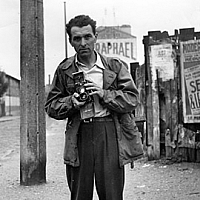
Tattoo
Curated by Peter Weibel, ZKM
The tattoo, originally "the tatau" ornaments the skin and thus abstracts everyday life. The Tattoo is a masquerade of the skin and marks the body itself as the place of fantasy. Because through the painted body - through the tattoo - the body itself becomes exotic and therefore there is no normal everyday life anymore. Now there is only an exotic and erotic everyday life possible.
To cover the body with signs is like opening a door. A door to paradise, to another place, to an utopian place. The body itself becomes this heterotopos. The body itself becomes this utopian place.
The door of the tattoo leads to the theater of illusions - just think of Genet -, to the theater of desires like in a dream. The door of the tattoo leads to the room of childhood, to the chambers of the unconscious.
To tattoo oneself is like inhabiting a house inside one's own skin, is like living in a house you designed yourself.
One revamps oneself with a tattoo. What is it that one revamps?
One revamps something that was broken. The tattoo revamps the damaged life. The tattoo is a wallpaper - a second skin. Because the skin is a central arena of the phantasm of desire. The tattoed body is a fetish object.
The skin as an erogenous zone, is the arena of lust and of its taboos.
Therefore tattoos and taboos are sisters and brothers. But who is the one who does not love the naked skin? But only the second skin, the painted, signed, tattooed skin. Tataus, tattoos are categories of the second skin. Tattoos, from the labia to the upper arms, are the hieroglyphics of the second skin. Clothing - bodices, corsages, latex, leather and rubber suits are like the flogged skin, injured skin, painted skin, pierced skin, tattooed skin - they all are conflicts on a borderline.
The skin is the border between the inside and the outside, between the system of the self and the system of the world between individual and social, between the self and the society. Who operates on this border, on the skin, wants to interfere with the agreements between the system of the self and the system of society, because he himself is disrupted by them.
The skin is that boundary, that arena, where the self tries to change the conventions and contracts between the systems of the self and the systems of society; where it tries to find and redefine the balance of self and world, of id, ego, and superego. Because in this battle of the conflicting parties, between superego and human drives, the tattooed transfers from the inside as far as possible to the outside, to this outmost boundary - the skin.
Because he can't bear this battle in any other way nor any longer.
Through the tattoo, the subject can violate and redraw and overwrite borders. Transgression is therefore the aim and the mark of the tatau.
The skin is the arena of writing and thus of the law of the symbolic order, of the name of the father. As described in the myth of Oedipus, the tattooed does not accept this symbolic order. The tattooed acts as Anti-Oedipus. The place of the father remains empty.
The tattooed turns the writing of the father into his own writing;
Turns the writing of hell into the writing of paradise. He himself defines his social self, rewriting himself on his skin, describing himself anew, designing a new phantasmatic self.
From the silver dresses of Courrèges to the plastic dresses of Mary Quant, from the tied dresses of Versace to the safety pins, the piercings and tattoos of punk culture, but also up to the glamorous world of Haute Couture and of fashion models, we see that fashion is nothing but a gigantic industry of the second skin - the domesticated art of tattooing.
Tattoos and piercings are little theater plays on the surface of the skin, stagings and masquerades, with the skin itself as the stage.
It is exactly here where the drama of law takes place: subjection and revolt. The tattoed individual is the pirate in this drama.
Peter Weibel
http://www.teutloff.net/website_EN/exhibitions.htm








